Nestled in Liguria, a seductive part of northwest Italy in the province of La Spezia, and sheltered by the mountains from winter winds, Cinque Terre along with Portofino is a paradise which UNESCO has listed as a site worthy of saving for the future. The traditional way of life continues after a thousand years and if that weren’t interesting enough, the area is home to some of the prettiest fishing villages on the Italian Riviera. One stands out as being synonymous with La Dolce Vita and that is Portofino.
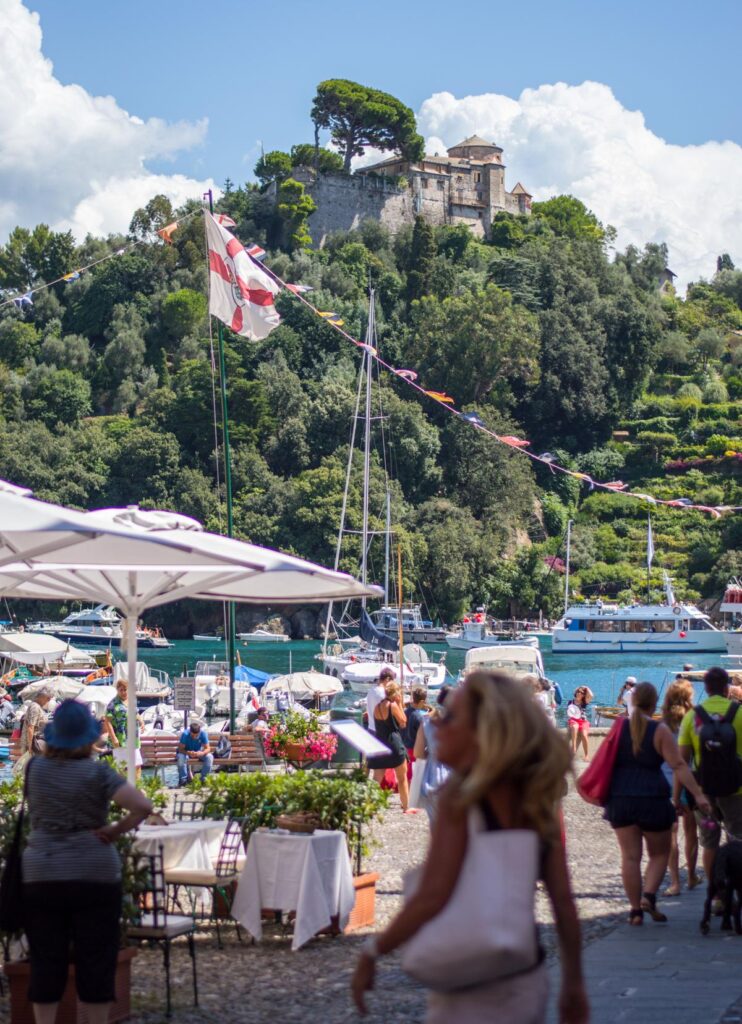
The Cinque Terre is deemed worthy of saving because little has changed from the time when the area was accessible only by donkey or on foot. It can be likened to a time capsule. The villages of the Cinque Terre were accessible only by foot until the arrival of the railway. That was in 1874. Nowadays, travel by car from village to village is practically impossible and access to some of the ports is best on foot or by sea.
Cinque Terre National Park and Protected Marine Area is in danger from landslides. Medieval cliff-side villages and Terraces must be preserved as farming and viticulture help to revitalize and maintain the slopes. Villagers have terraced the steep mountainsides for fruit and vegetable farms and vineyards and this delicate relationship between man and the natural environment helps maintain the terraces, in a thousand-year old tradition. At the same time, there is a strong fishing culture.

When I visited years ago, the area had not been listed by UNESCO. It was pristine. Walking on donkey trails overlooking the sea from one spot to another was exhilarating. Down below, little seaside cafes, fish markets and brightly coloured flowers in terracotta pots beckoned from the various ports, especially in the now very upscale Portofino.
Delicious flavours and wonderful aromas linger in my memory. What could be more refreshing than mineral water with a spoonful or two of the local rose syrup, or perhaps a splash of Ligurian orange flower water. For a simple lunch there is always pasta with fresh pesto made by combining a handful of basil with virgin olive oil and Ligurian Vessalico garlic, organic of course. Fresh bread just out of the oven was always a good choice, accompanied by slices of delicious garlic sausage, fresh tomatoes and some pecorino cheese. I remember looking forward to a unique dessert made of dried chestnuts. Traditional recipes, wonderful food.
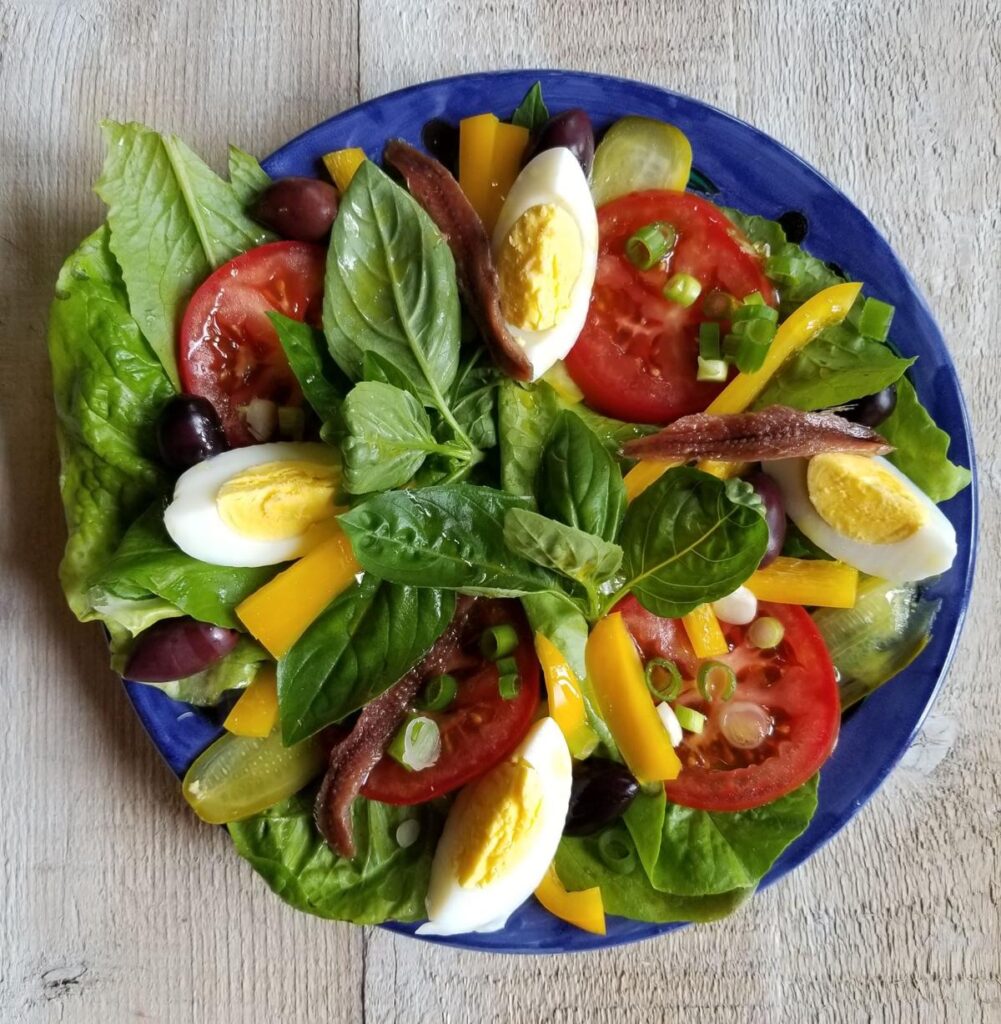
Portofino is one of the prettiest villages on the Italian Riviera. It is also where dolphins, the fastest, most agile and playful of whales, once gathered in large groups. According to Pliny the Elder, Portofino was originally called Portus Delphini because of the dolphins. It is a magnet for celebrities, includingOprah, Steven Spielberg, Kate Blanchet, Elle Macpherson, Giorgio Armani and Elton John.
The Riviera is a narrow coastal strip between the Alps and the Mediterranean. It extends from Hyeres in France to La Spezia in Italy. Genoa is the centre of the Italian Riviera and divides it into the Riviera di Levante (east) and the Riviera di Ponente (west). A panoramic highway runs above the Riviera from end to end. It is known as the Corniche. A drive along the Corniche reveals the luxuriant vegetation for which the entire area is known, villas set in beautiful gardens and world-famous resorts which developed during the 19th century because of the region’s mild climate.
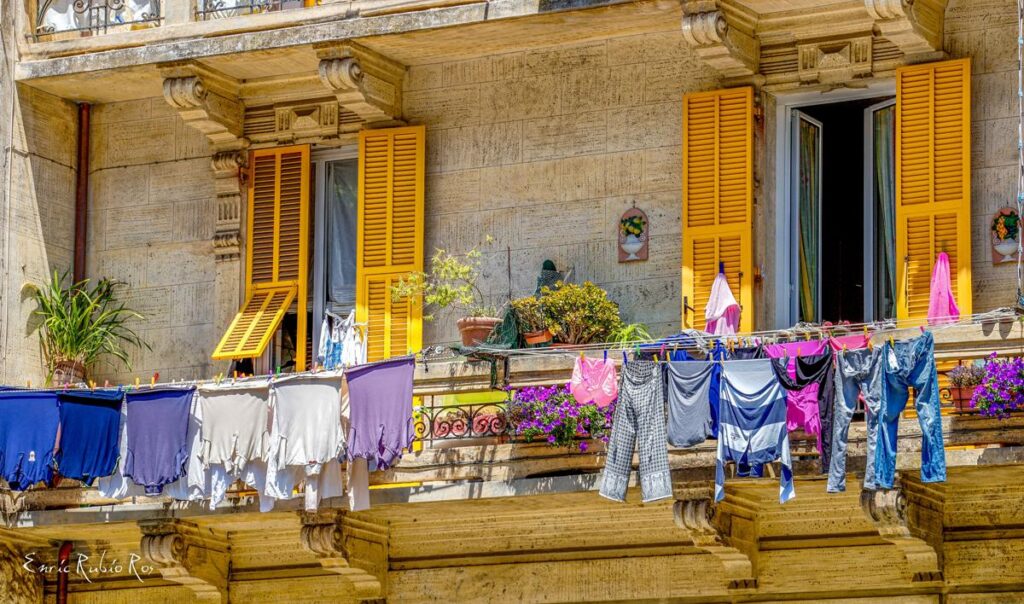
Portofino is a port of call on many cruises. To sail into the port is to journey into centuries past, following in the footsteps of Dickens, Gide and Guy de Maupassant – even though the harbour now overflows with gaily festooned high-tech yachts from all over the world.
On the day we arrived in Portofino on the Riviera di Levante (Riviera of the Rising Sun) we ordered coffee and croissants at the Belmond Hotel Splendido’s harbour restaurant. Later, as we sat and sipped the delicate, straw-coloured DOC wine of this area, we could see Elton John’s pink mountain-side hideaway. If you ask for the Cinque Terre DOC wine, you will be able to try a unique white wine known since Roman times. With it, why not try the pasta with Genoese pesto or black ink octopus pasta with tomatoes and burrata cheese.
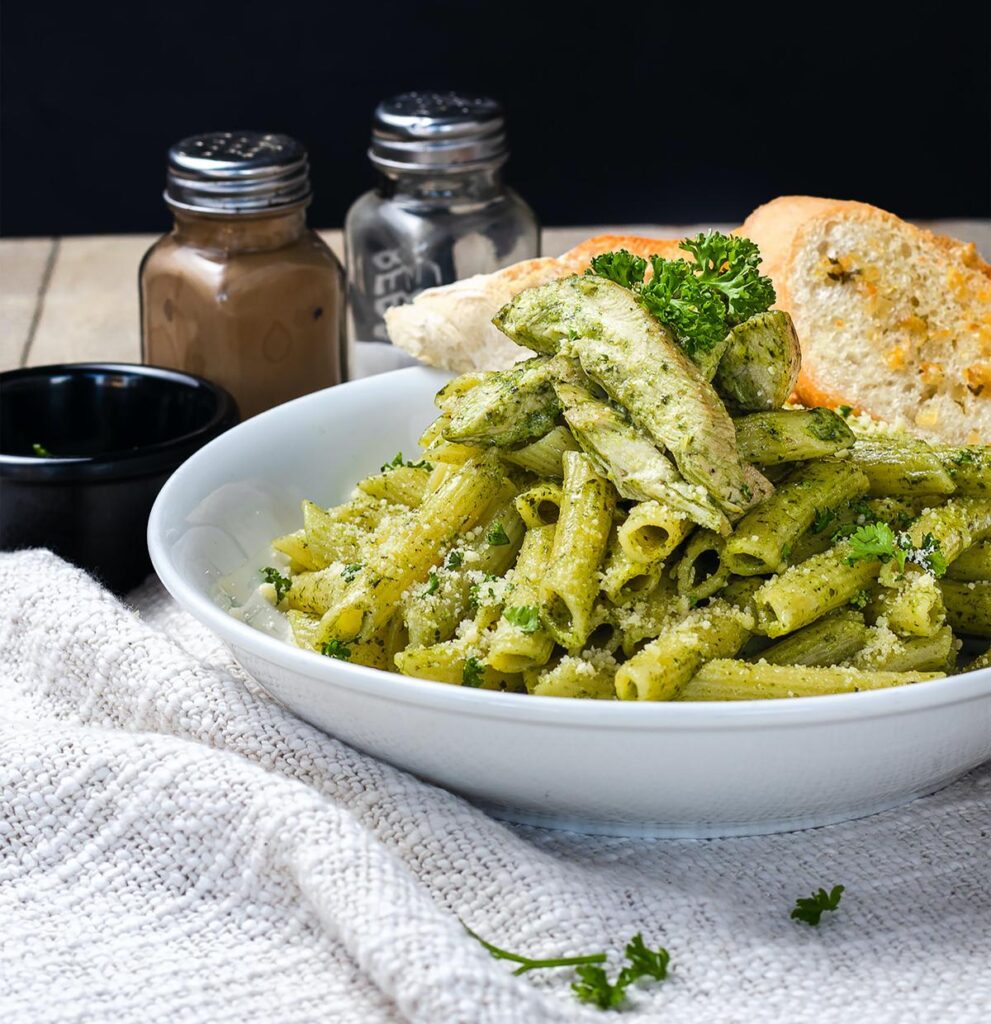
Portofino’s sheltered harbour makes it a convenient port of call between Genoa and Rome and that is how my second visit to this little paradise occurred. It had been years since my first walking tour and I was happy to be back to this special area.
To list every twist and turn of the streets would be tedious, but things which stand out in my memory include the scent of wild thyme and pine in the air; tall pastel-coloured villas overlooking charming piazzas; cypress trees, bougainvillea, bushes of lavender and hanging baskets with cascades of flowers; romantic cafes and elegant restaurants; shops selling handmade lace; as well as numerous expensive boutiques. On the south side of the harbour is a house in which Guy de Maupassant stayed in 1889. And lemon trees, nostalgically featured in Eugenio Montale’s book of poems The Lemon Trees, spread their sweet fragrance everywhere. This Genoa-born writer won the Nobel Prize for literature in 1975.
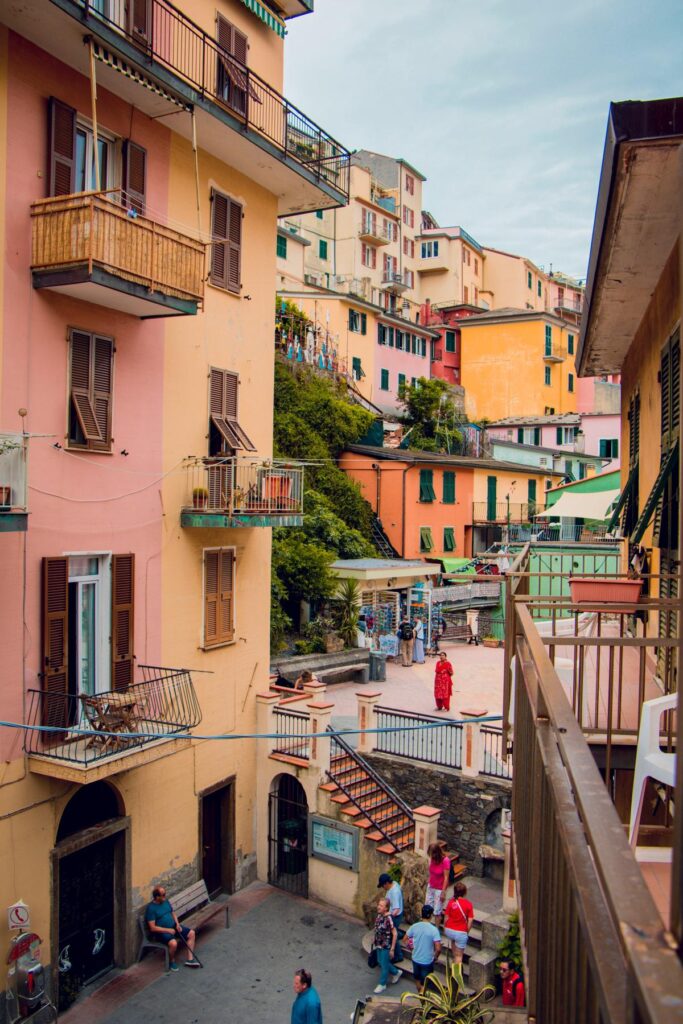
The world-famous hotel overlooking the bay — the Belmond Hotel Splendido — was originally a monastery. The four-storey building was attacked so often by Saracen pirates in the 16th century the monks abandoned it to sheep grazing over the herb-scented hills.
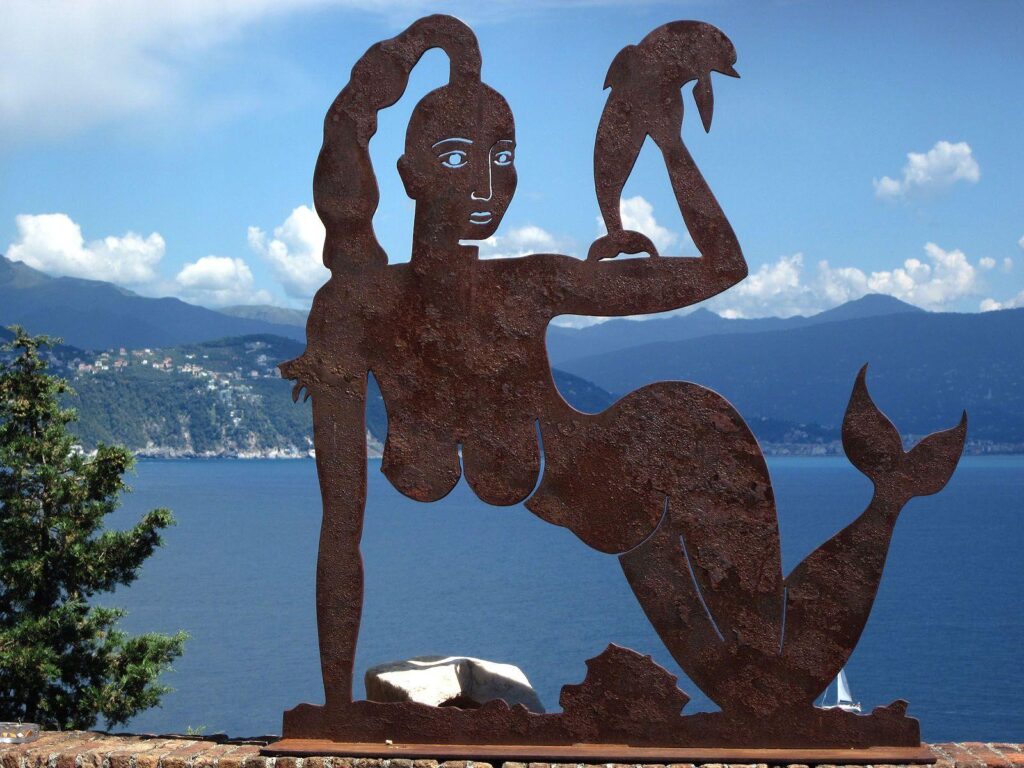
In the 19th century, this ruin was converted into a private villa and in 1901, it opened as a hotel. Today, the Splendido is one of the most exclusive hotels along the coast. It sits on its hillside amidst tropical terraced gardens containing yews, sea pines, mimosa and olive groves. Lunch at the hill-top hotel is one of the most elegant ways to experience this exceptional setting.
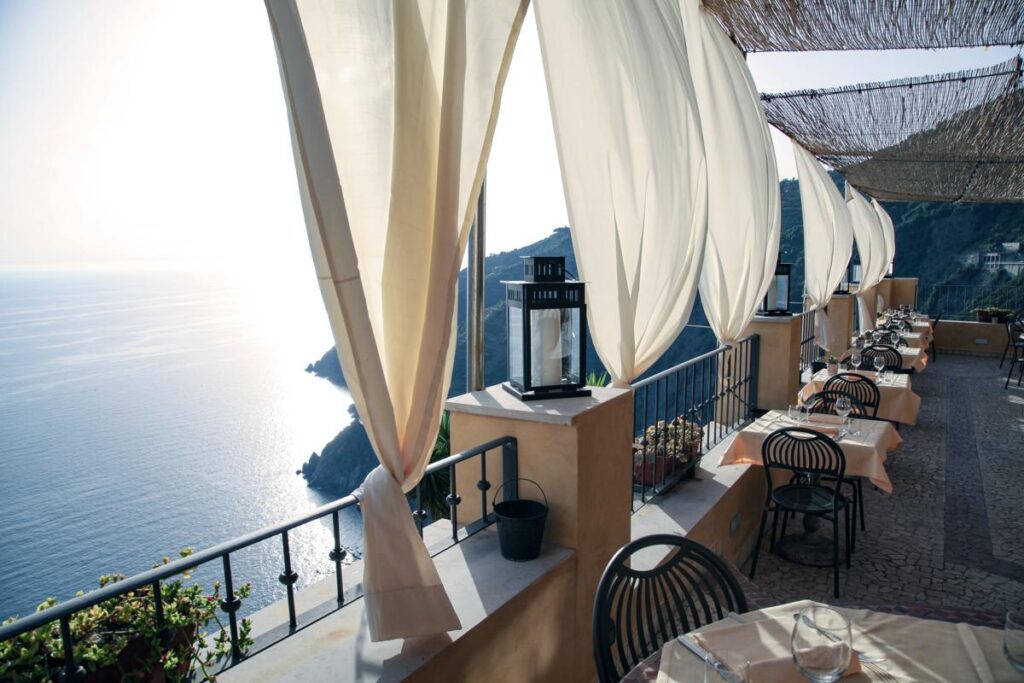
Portofino once belonged to the Benedictines of the abbey of San Fruttuoso, a nearby fishing village. The recently restored abbey was founded in the 10th century. Called the Abbazia di San Fruttuoso di Capodimonte, it was built to house the relics of Saint Fructuosus, which arrived after the Moorish invasion of Spain in 711. The first building was destroyed by Saracen raids, and rebuilt in 984 as a Benedictine abbey.
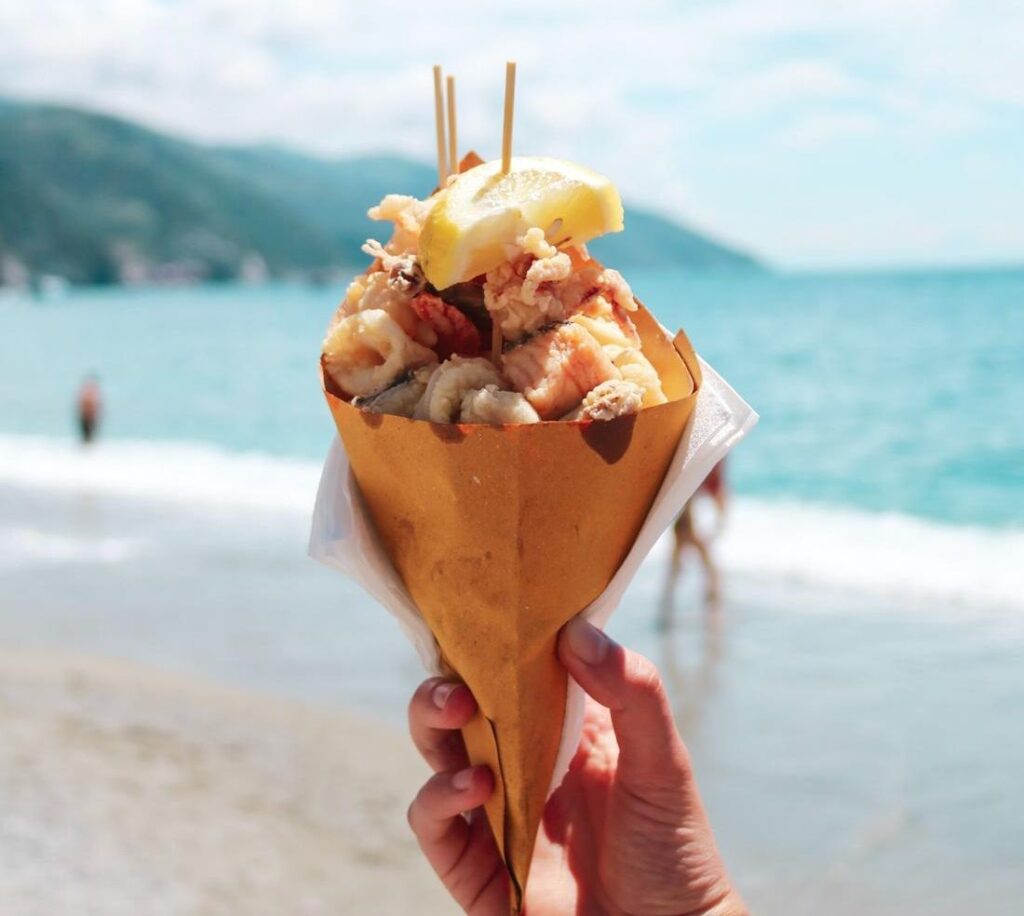
We felt like a hearty walk before returning to the ship so took the path up to Portofino Vetta (or you might take a bus). It’s another 20 minutes or so to the top of Monte Portofino. At 612 metres it is high enough for marvellous views over the Riviera and on very clear days you can see as far as Corsica, “The Scented Isle“. But that’s another story.



